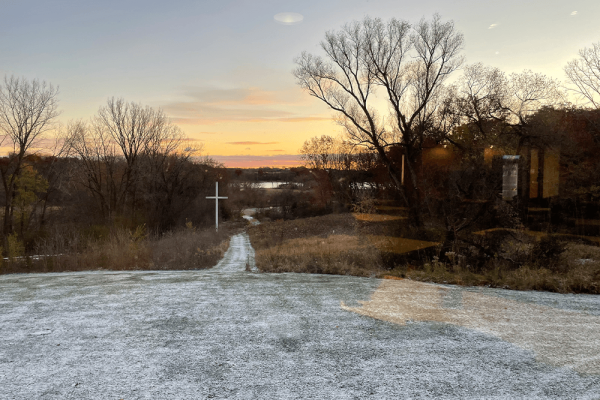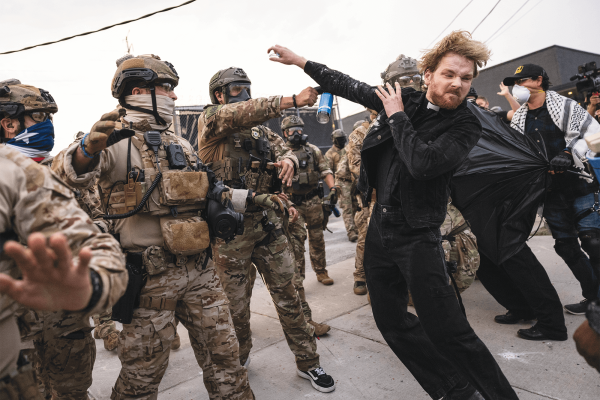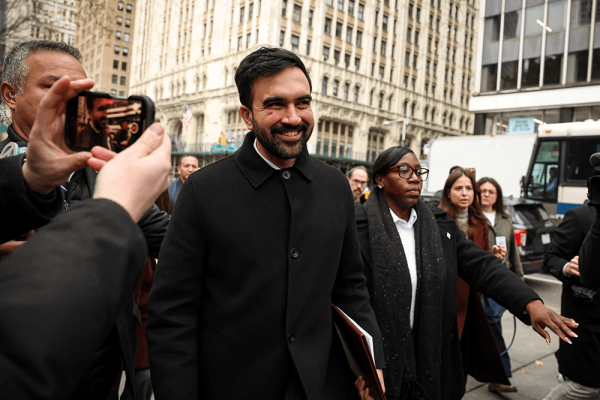.... And o my people out yonder, Hear me, they do not love your neck unnoosed and straight. So love your neck; put a hand on it, grace it, stroke it and hold it up. And all your inside parts that they’d just as soon slop for hogs you got to love them. The dark, dark liver - love it, love it, and the beat and beating heart, love that too. More than eyes or feet. More than lungs that have yet to draw free air. More than your life-holding womb and your life-giving private parts, Hear me now, love your heart. For this is the prize.
–Toni Morrison
MONTGOMERY, ALABAMA. Human utterances are of little consequence here. It is one of the weary stations of the American cross. More than 800 distinct metal monuments memorializing children, women and men. Hanging.
It is a still summer’s day on this undulating hill. In the distance Spanish moss hangs limp from surrounding trees. I have come with my family. We separate spontaneously. Each is alone. Ponderous. The air is going out of me. My hands furl into fists. My throat closes. My eyelids flutter. There is no consolation here.
I have met Silence. The ghostly silence of dust balls and mites, of cobwebs and sunbeam shadows in the cold crumbling cubicles off the Liberian coast where African persons spent their last nights and then lost sight of their land forever. I have felt the stony silence of apartheid era prisons in Johannesburg and Cape Town. I have seen the nostalgic silence of colonial desolation on the Harare Kopje, in Zimbabwe. But this silence at The National Memorial for Peace and Justice is like none other. A requiem.
The aspirational language of ‘Peace’ and ‘Justice’ in the name of this Memorial is striking. They are words of perpetual longing. In fact, the place commemorates those Americans known and unknown who were lynched for living free in the years between 1877 and 1950. This place invites all who visit to explore our past because of our encounters in the present. For today we visit racial terror on the direct descendants of those bodies lynched not long ago. While charting the pathways of mass incarceration and capital punishment in our time we run inevitably into its historical precedent, lynching. One rope twines every generation, binding all. This memorial tells the understory of the making of America. It bears witness to a truth that lies largely mute elsewhere.
picture2.png

Here stands a mean collection of names rubbed out from the stubborn soil of a receding history. These are the names of Negroes who were turned into objects of anxiety for white people. They were made into lynching trophies for their gawking pleasures. Even casual or chance references to Negro humanity would be a high offense. The mere possibility was unbearable for those whose small comfort lay in not being a Negro. Lynching put to death any residual vestiges of Negro humanity. This was despite all aching evidences to the contrary.
Benjamin Little (1885, Mt.Pleasant, Texas) for “slandering a respectable white family.”
But Spears (1888, Lauderdale County, Mississippi) for protesting the recent lynching of another black man.
Jim Eastman (1887, Brunswick, Tennessee) for not allowing a white man to beat him in a fight.
A black man (1892, Millersbury, Ohio) for ‘standing around’ in a white neighbourhood.
Warren Powell, 14 (1889, East Point, Georgia) for ‘frightening’ a white girl.
Henry Bedford (1934, Pelahatchie, Mississippi), a 74 years old formerly-enslaved man, for “talking disrespectfully” to young white men.
Laura Nelson and her teenaged son, L.W. (1911, Okemeh, Oklahoma) after a white man was found dead.
David Walker, his wife, and their four children (1908, Hickman, Kentucky) were lynched after Mr.Walker was accused of using inappropriate language with a white woman.
William Donegan (1908, Springfield, Illinois) for having a white wife.
Otis Price, (1938, Perry, Florida) for walking past a window while a white woman was inside bathing.
Ernest Green and Charlie Lang (both 14, 1942, Shubuta, Mississippi) after a white girl said they were threatening.
Henry Patterson (1926, Labelle, Florida) for asking a white woman for a drink of water.
Rachel Moore, (1921, Rankin County, Mississippi) by a mob searching for her son-in-law.
Man and woman (1919, Picken, Mississippi) for writing a note to a white woman.
Mary Turner with unborn child (1918, Folsom bridge, Georgia) for complaining about the recent lynching of husband, Hayes Turner.
Ballie Crutchfield, (1901, Rome, Tennessee) by a mob searching for her brother.
Caleb Gadly, (1894, Bowling Green Kentucky) for walking behind the wife of his white employer.
The trail of names went on. There were thousands of them. Sometimes two and three were taken from the same home on the same day and the day after. Some were known and recorded. And others lost. Wantonly. Some descendants are here. They are seeking names, dates, and places. I hear them in weepy whispers around me. They let out gasps of recognition. They beckon to one another from disparate locations. “Come here,” I hear. And then one points upwards. I am a voyeur at this living memorial.
These are they who were not raped, shot, imprisoned, drowned, trafficked, burned, branded, beaten, starved, and who lived to tell someone. These were hanged publicly as a lesson, once and for all. From ropes on trees, iron posts, bridges, in backyards, and public squares. After the abolition of the international slave trade in 1808, there was an immediate ramping up of domestic slavery through trafficking, auctions, convict leases, and lynching to fuel the settler economy and to firm up the creedal identity of America.
These Negroes made a spot in time as they kept faith, believing in the goodness of a God who delivered the Israelites out of Egypt. In doing so they secured a future for coming wanderers like me. I keep remembering the fears and anxieties codified among the upper castes and classes in my native India. I had seen it in South African history replete with the similar anguish. As I look up at the suspensions I know that every Negro name inscribed on the metal memorial above me fertilized the soil of my American freedom. They died for me. And I know that this Negro narrative is a serial subsequent to the genocide of the native population before them. This is how we come into our claims of greatness.
Impotent. I want to moan a “Thank You” into the empty air above me.
Grief and Gratitude make strange companions.
Oddly, as I walk in this eerie silence a strange and merciful calm comes to me. For this memorial is a witness to yet another tragedy. The mad and fierce undertow of white anxieties and their mortal fears are swirling around. I understand. And I am without rancor. Whites had set their sights so low and I am sorry. Sex, property, religion, and ideology were sufficient causes for living and killing. The annulment of Negro humanity came in handy to ensure their measly longings. Systematic violence against men, women, and children would be effective and economical in this scheme. Whites drew the margins of their minds onto black bodies. Intimate strangers. This place provokes and inspires. This remembrance for a sacred people is somehow restorative even as it is exhausting. I had to come. I had to pay tribute. The names I read move me to cover the untravelled distance ahead of me. They compel me to retell the American story with grief as its center. Strange Fruit indeed!
At the exit I stop for a drink and there sits a woman in a wheelchair who wants to chat. She has come from Liverpool, England. Liverpool was a major capital of the European slave trade in the 18th and 19th centuries. She is a descendent of slaves spawned on the docks of that history. She is here to find out how things ended in the New World. In her Liverpudlian diction she makes it a point to ask me if I have heard of penile dysfunction. I am bemused. She tells me that it is important to understand in order to explain this wretched history. I nod. After Montgomery she is heading out to West Africa to complete the triangle of those dark passages.
I am at the Legacy Museum a few minutes later. The museum attempts to speak to America’s silence about the horrors of its slave history, and the ongoing terrors perpetrated against Americans of African descent today. The enslavement goes on in our private and public spheres today. But I am floored by a miraculous occurrence. I run into the raging persistence of light in this utter darkness. On the shelves sit clear glass jars filled with soil collected from lynching sites. These are labeled with the names of the victims. I note a strange and unlikely development inside some of these lidded bottles. Tiny green plant shoots are craning into the dim light. The phoenix of my freedom rises from this soil. A profligate beauty!
Then in that ubiquitous commerce that exists at the exit of every showroom of history amid the tourists and the souvenirs, I hear an audio recording of Martin Luther King. As I have also heard Mandela and Gandhi before this. King is reaching his inimitable crescendo with his “... abiding faith in America and an audacious faith in the future of mankind …”
I have a promissory note in my keeping. To realize “America.”
Got something to say about what you're reading? We value your feedback!







